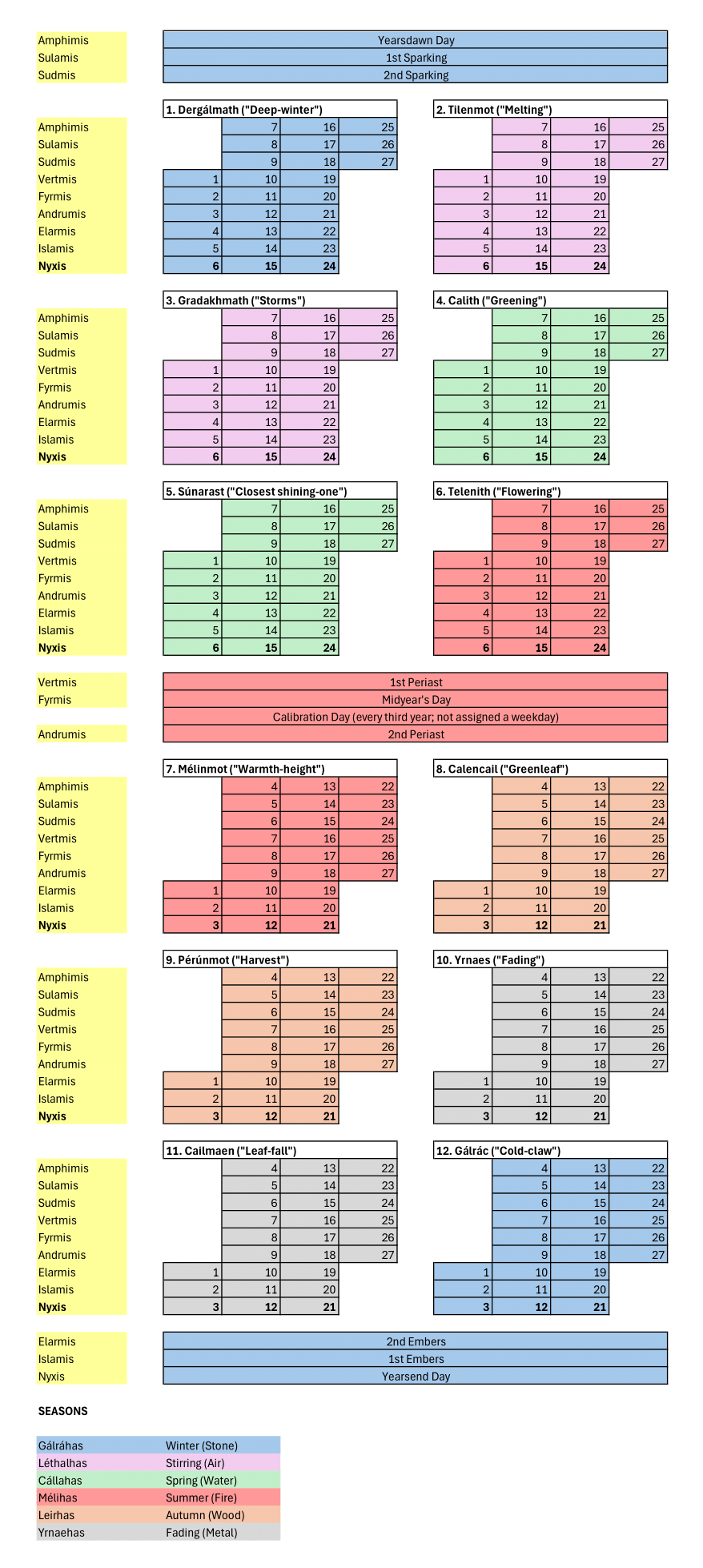Repent, Horologist! Said The Tick-Tock Man
Ladies and gentlemen, I take you now to - the calendar!
Specifically, I take you to the Harmonious Calendar, the standard calendar used by Imperial chronometrists ever since the Founding (although in its basic structure it required little adjustment, primarily the setting of a new base point/year zero, and the standardization – if not translation – of day, month, and season names into now-standard Eldraeic.
Its units are, naturally enough, dictated by the period and rotation of Eliéra around its star, and as such, it uses a 333-day solar year. That year is divided into 37 weeks of nine cycles – a complete planetary rotation, completing a day and a night¹, is referred to as a cycle – each; a convenience of this arrangement is that the year always begins (at the winter solstice) on the first cycle of the week, Amphimis, and ends on the last cycle of the week, Nyxis.
The year is also divided into twelve months of three weeks (or 27 cycles) each, a total of 324 cycles, and nine intercalary cycles are added (six at the start and end of the year, and three in the middle) to make up the full count. While the length of a month is not an exact divisor of the length of the year, it was taken from the period of Seléne, the major moon; however, the months no longer follow her phases, as they’ve been synchronized with the years.
Since Eliéra’s orbital year includes an additional 0.3 days, a “leap” cycle is inserted to calibrate the calendar² every third year, but omitting every thirtieth. Its name is derived from its function, and Calibration Day is added each year immediately after the intercalary day for the summer solstice, Midyear’s Day.
The twelve months of the year are also divided into six two-month seasons (shown by the color-coding and the key at the bottom), in accordance with the cultural tradition of dividing things into groups of six and assigning them correspondences with the classical elements.

- Or a night and a day. For convenience, the cycle on the Upperside runs from dawn to the following dawn, and that on the Underside from dusk to the following dusk, and thus constitutes the exact same period regardless of your location.
- Since Calibration Day is already an anomaly in the regular progression of the cycles, leap seconds and other minor temporal adjustments are traditionally included in the Calibration correction.